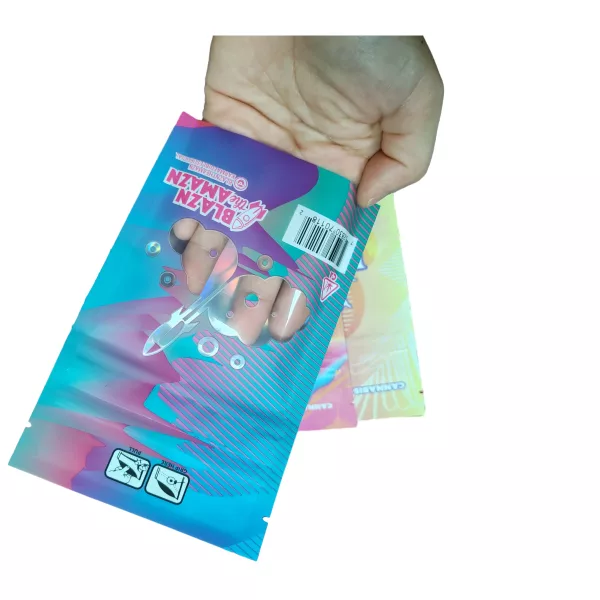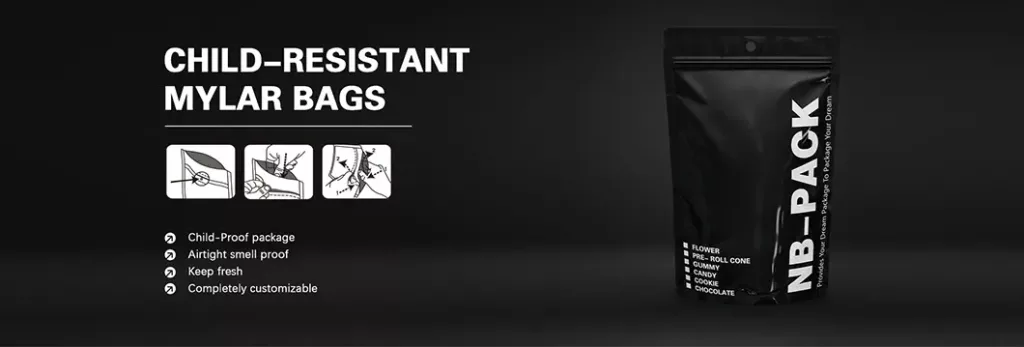We all enjoy snacks, but how safe are those snack packages? Of course, chips or chocolate may seem harmless, but what if a small child opens a package and eats something harmful? That is where child-resistant snack packaging comes into play. It may sound like yet another marketing term, but it is actually something quite important. Let’s look into why child-resistant packaging matters for safety and also why it’s not just a passing trend, but a real need in today’s market.
Why Child-Resistant Packaging Is Crucial
Snack packaging has come a long way from the basic bag or box it used to be. Nowadays, it’s all about making sure snacks look great but also that they are safe, especially in households with kids. Snacks aren’t just for children anymore; there’s a wide variety out there for adults too, like CBD snacks, or even snacks with high levels of caffeine or other active ingredients. Products of these kinds, unless properly packaged, would pose health hazards to children, who out of curiosity might open and eat what they are not supposed to.
Imagine a child opening a snack bag full of gummies, only to find out those gummies contain something that can harm them. This is one of those situations that no parent wants to face, and that’s where child-resistant packaging plays an important role in preventing accidents.
What Exactly Is Child-Resistant Packaging?
In simple terms, child-resistant packaging is packaging that has been designed in such a way that it will be difficult for children to open. It is more likely to take more effort than a child might be able to exert, for example, twisting, squeezing, or pressing the jar or bag in specific ways. These are simple but ingenious design changes to keep kids out and still make it easy for adults to get at the product.
For snack products that contain something potentially harmful, like high doses of caffeine, CBD, or even certain types of baked goods, child-resistant features can literally save lives. These design features prevent little hands from getting a hold of things that could be dangerous for them.
Also, packaging should be done based on some set standards by the authorities. In the United States, for instance, the Consumer Product Safety Commission dictates the rules on what makes packaging “child-resistant.” That is to say, it is not just a matter of giving a label to the product; companies should test their packaging to meet these government guidelines.

Why It’s a Legal Requirement
Food products that contain elements considered harmful to children, such as some forms of cannabis or highly caffeinated content, need to follow specific safety regulations when being sold in the snack food industry. Any failure to comply would result in putting the children in danger while making the companies susceptible to huge penalties and possible lawsuits.
These are not arbitrary regulations but rather ones set up to save the children from poisonous substances. An example would be edible products containing CBD or THC, active ingredients in cannabis—the growing popularity of these among snacks forces manufacturers to render the packaging inaccessible to children. If a company has child-resistant packaging, this legally allows them to sell their products without finding themselves in perilous situations or in contempt of the law.
Child-Resistant Packaging‘s Role in Consumer Trust
Nowadays, people are becoming more educated and conscious about what they buy, especially when it comes to their children. When parents see a product that has child-resistant features, it gives them a sense of security, knowing the company went the extra mile to help keep their family safe. It helps them trust the brand.
For businesses, however, child-resistant packaging is equally effective in getting an edge over the competitive market. A company offering attractive-looking products yet assuring safety features can easily showcase its concern for its consumers. Whether it is the high caffeine-containing snacks or the baked items, safe and secure packaging of the product is more attractive for the concerned buyer.
Trend of Eco-Friendly and Child-Resistant Packaging
While the demand for sustainable packaging is fast catching up, this trend surprisingly spills over into the child-resistant packaging market. In today’s ecologically tuned world, customers would like to see brands balance safety with a sense of responsibility towards the environment. And the good news is, child-resistant packaging is not just about protecting children; it’s going green too. More and more, manufacturers are making packaging out of recycled materials and biodegradable materials that provide a win-win solution: safety cum environmental protection in one.
Couple child-resistant packaging with sustainable options, and brands will meet their safety regulations while showing customers a commitment to taking care of the planet—something today’s customers value more than ever before.
Compliance and the Need for Consistency
For snack companies, most especially those with products that require regulation, it is important for the packaging of such products containing cannabis or CBD to be in full compliance with required legal standards. Similarly, consistent and proper packaging shows that a firm takes consumer safety seriously.
Some would see child-resistant packaging as an extra cost. To any company concerned with safety and compliance, it’s one of those basic investments that are worth making. After all, a child-resistant package costs nothing against the potential damage caused by not having that aspect taken care of. Very succinctly put, compliance is not an option; it’s a given for a brand who wishes to be continuously trusted and legally sound.

The Future of Snack Packaging
Noting trends for the future, one sees that child-resistant packaging will keep evolving: innovation in design is at hand, and on the doorstep, integration with technology or smart packaging stands in view. Imagine a package of snacks sending notifications to your phone upon opening, or even packages resistant to children but with very valuable detailed consumer information provided through QR codes. Such packaging innovations may soon come out into the market and continue to be focused on both consumer safety and user-friendliness.
Conclusion: Safety First
Safety should never be compromised in the packaging of snacks, especially those products containing ingredients that could be hazardous to children. Child-resistant snack packaging plays a very important role in protecting the most vulnerable members of our society—that is, children—while keeping the product accessible for adults. It not only guarantees safety but also helps brands comply with the law, gain consumer trust, and show their responsible side.
This means that as health and environmental concerns are increasingly considered important in our world, companies have a significant opportunity to show where they are truly leading the charge with smarter, safer, and more eco-friendly packaging options. So, the next time you pop into a store to buy some snacks, remember: all that hard work goes into making sure your snack is safe and secure for everyone, including little fingers!

